| Index - Fall, 2018 |
|
Wild at Heart: Wildlife Rehabilitators in Vermont
by Michelle A.L. Singer
|
In Vermont, it is legal to give care to domestic animals like dogs, cats, and rabbits and even “unprotected species” like starlings, pigeons, house sparrows, and mice. However, if you encounter injured or orphaned wildlife, that’s a different story. In order to provide care for them, you have to be a special kind of person: a licensed wildlife rehabilitators.
The Vermont Fish & Wildlife Department, under the Agency of Natural Resources, manages the licensing of wildlife rehabilitators and requires a specific process to earn one. Their regulations state, “Only licensed rehabilitators may legally provide care with the ultimate goal of returning the animal to the wild as quickly as possible, giving the animal the best chance of survival. Vermont rehabilitators may legally possess and treat most common birds, mammals, reptiles and amphibians with the exception of deer, moose, bear and wild turkey.” According to their website, there are 18 wildlife rehabilitators in Vermont who have earned their licenses, stretching from Marlboro to Fairfax, Colchester to Barre. Fourteen of these hardworking, big-hearted volunteers are women.
I spoke with three of the 14 women who do this work: Julianna Parker of Otter Creek Wildlife Rescue in Addison, Aimee Brown of FourWands Wildlife Rehabilitation in Barre, and JoAnn Nichols of the Chittenden County Humane Society and HEART, her humane wildlife removal business. Julianna Parker will often be the first to take songbirds, ravens, and woodpeckers, but Aimee Brown will most likely be the one to take in squirrels, and if there is a reptile in need, JoAnn Nichols is your woman.
Continue Reading...
|
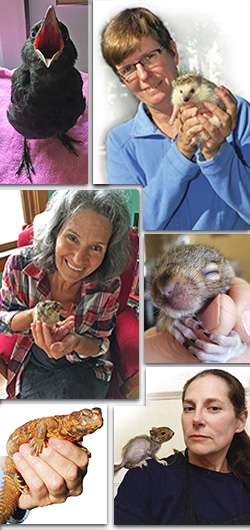 |
|
Innovating Women
by Diane DeBella |
Women own over 20,000 businesses in Vermont, which employ more than 36,000 people and generate annual revenues of $2.2 billion. That sounds pretty impressive, but women-owned businesses employ only 12 percent of the workforce, and women owners are still significantly underrepresented in nine of the highest grossing sectors in the state, such as manufacturing, wholesale and retail trade, and construction.
This lack of participation of women in business has a significant impact on the Vermont economy. According to a 2016 status report published by Change the Story, “if the percent of women-owned businesses that are employers matched that of male-owned businesses, and those firms had the same average receipts, it would add $3.8 billion to Vermont’s economy.”
The good news is that women-owned businesses are growing more than twice as fast in Vermont as those owned by men—at an annual rate of 15 percent versus 6 percent. Vermont is often touted as fertile territory for independent innovative thinking, which can lead to unique and sometimes groundbreaking businesses. Vermont Woman interviewed the enterprising women behind three new and growing businesses in Vermont.
Under the Weather: Kyla Sternlieb, Founder & President
It was a hot summer day in 2012 when Ruffy, Kyla Sternlieb’s wheaten terrier, fell ill. The vet recommended an antibiotic, but Sternlieb couldn’t give it to the dog on an empty stomach, so the vet told her to make a bland diet of chicken and rice.
Continue Reading...
|
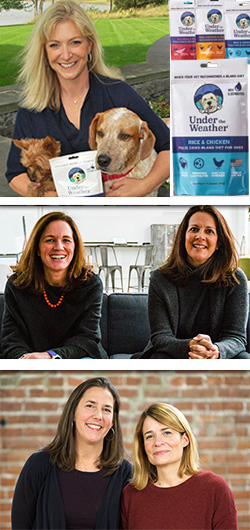 |
|
Women and the Coming Midterm Elections
by Cyndy Bittinger
|
It took 72 years for women to get the vote. The first gathering devoted to women’s rights in the United States was held July 19–20, 1848, in Seneca Falls, New York. Finally, in 1920—after a long series of intrepid lobbying efforts and more dramatic actions, such as imprisoned suffragettes going on hunger strikes—the 19th Amendment, or Susan B. Anthony amendment, was finally passed, granting women the right to vote.
After that, the women’s movement largely fell apart for the next four decades. Women did vote and joined various organizations, but that grassroots groundswell did not carry forward with new demands. During the 1920s, women did not coalesce into a unified voting block, and their efforts in the two political parties were largely blocked. During this time, a powerful “women’s vote” never came forward to lobby or even to vote in great numbers.
It took the women of the 1960s to push for reforms in the so-called Second Wave of feminist activism. Women finally voted in equal numbers to men, and in the 1980s, the percentage of women voters surpassed that of men.
A record number of women are now running for the US Congress; 183 are seeking seats in the House—as well as many running for local and state offices. But will we see follow-through? Will we see action at the local and state level in the midterm elections? Will women be lining up in droves as they did after Trump’s inauguration day? Will history be made November 6, 2018, bringing in a new wave of women into Congress?
Continue Reading...
|
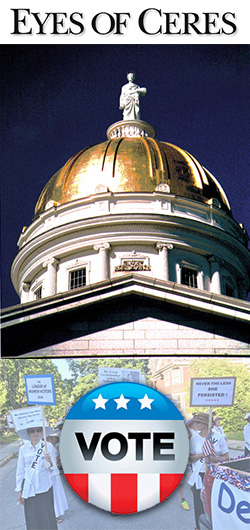 |
|
It’s Our Turn to Help Earth
by K.C. Whiteley |
Organizational consultant, writer, and teacher Margaret Wheatley writes about our role in creating change. In a foreword she wrote to Living System: Making Sense of Globalisation by Bruce Nixon, she tells of a Buddhist teacher who encouraged people filled with despair over the state of the world. His advice was simple and wise: “It’s just our turn to help the world.”
Most people I talk to these days seem overwhelmed by the hypnotic distraction of rapid-fire tweets and pop-up alarms from the White House that dominate our daily news. The news of what’s happening around the world often leaves me in a state of inertia, spinning with nothing to grab onto or even able to think about something constructive I can actually do. Does this sound familiar to you?
This column aspires to offer ideas on what we can do to have a positive impact—how to concentrate our time and energy on making a real difference in our neighborhoods, communities, and state.
A World on Fire
Did you know that this past July was the hottest month ever recorded in Vermont? Add in high humidity and you get what Scott Whittier, National Weather Service meteorologist in Burlington, calls the heat index. “The heat index values were over 100—some approaching 110, which has never occurred. Those type of values are very dangerous to all people,” he said.
Continue Reading...
|
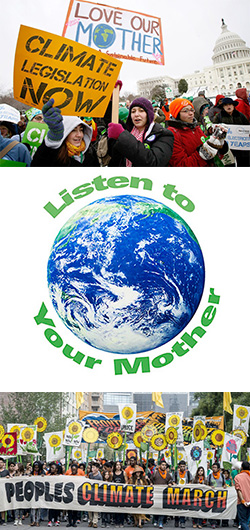
|
|
Coming of Age: Madeleine Kunin’s Coming into Old Age Memoir
by Lori Lustberg
|
It is impossible to overstate the profound impact Madeleine May Kunin has had on women’s lives, hearts, and minds, as well as on the local, national, and international discourse on feminism and social justice issues. Kunin’s bravery, courage, and grace in stepping forward time and time again, as a public servant and an outspoken advocate on behalf of women’s rights, has changed the course of history.
In her new memoir, Coming of Age: My Journey to the Eighties, we see a different side of Kunin than we have seen in her prior writings. Coming of Age is not a political book but rather, as she herself describes it, a “coming-into-old-age memoir,” in which the reader is privy to Kunin’s deeply intimate reflections on the physical and emotional aspects of aging. “Now that I am no longer involved in politics,” she says, “I can write differently. Now my skin has become more translucent. I can be more personal. I don’t wear the same shrink wrap I once sealed myself in. I can be more reckless without being judged.”
Continue Reading...
|
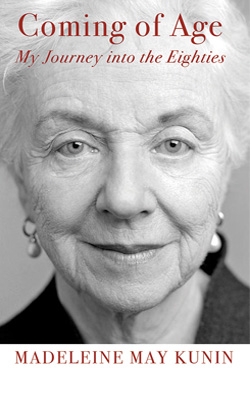 |
|
Setting the Record Straight on Women in the Arts
by Cynthia Close
|
Why have there been no great women artists? Feminist art critic and historian Linda Nochlin posed that question in her groundbreaking essay of the same name, published in ArtNews in January 1971. Nochlin, who died in October 2017 at age 86, suggested that even posing this question buys into the underlying presumption that “there are no great women artists because women are incapable of greatness.” Rather, Nochlin suggests, it’s a “miracle … that given the overwhelming odds against women, or blacks, that so many of both have managed to achieve so much sheer excellence, in those bailiwicks of white masculine prerogative like science, politics, or the arts.” We must first, she writes, examine our institutional and social structures and the view of reality they impose on us.
Although women through the centuries have always made art, they were mainly recognized for their efforts in the so-called domestic arts of lacemaking, quilting, sewing, and pottery, rather than the fine arts of painting and sculpture. In the male-dominated fine arts, women primarily functioned as muses, posing nude for male artists.
A few female late Renaissance artists—like Artemisia Gentileschi (1593–1656), whose work rivaled that of Caravaggio, and Mary Beale (1633–1699), one of the most talented portrait painters of her time—earned the right to place their easels side by side with their male counterparts. But these women usually had the benefit of upper-class wealth and the support of their fathers or, in the case of Mary Beale, their husbands.
Continue Reading...
|
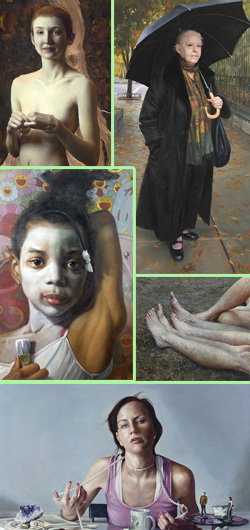
|
|
Publisher's Message: Who Are We Anyway?
by Sue Gillis
|
Everywhere I go, everyone I talk with, no exceptions, has sunk to outrage and despair. A country under dark leadership is a country without hope, without recourse, and it’s a heavy lift. We question who we are as Americans, what we stand for, what our values are, and what we want our children to learn, know, and respect. The essence of what kind of Americans we thought we were is shattered. We know it in our guts, and we are scared we will not recover.
Continue Reading...
|
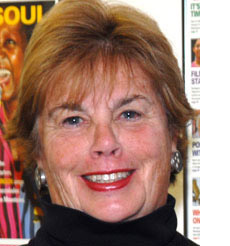 |
|
Editor's Message: Hair On Fire
by Kate Mueller
|
In early July I escaped to the ocean for one week and for days managed to avoid the news. I needed complete rest, some ignorant bliss, and to be cradled and rocked in saltwater waves.
But within days of my return I was feeding at the news trough again. I came back just in time to witness, gape-mouthed, Trump’s performance at Helsinki—followed by more craziness I can’t even remember now. I became, almost inexplicably, nearly catatonic, barely able to function. After some days I roused, got back in the game, only to be hit by something worse—my despair shifted to an abiding sense of doom, a kind of desperation and a deep anxiety.
Continue Reading...
|
 |
|











